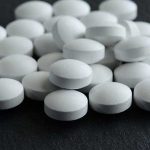- Opana Withdrawal Symptoms
- Opana Withdrawal Timeline
- Opana Detox Process
- Opioid Withdrawal & Addiction Treatment
Opana withdrawal symptoms include goosebumps, diarrhea, nausea, vomiting, pupil dilation, sensitivity to light, high blood pressure and body temperature, and increased heart rate.
Withdrawal symptoms may start less than one day after the last dose and can flare up several months after. An opioid detox program is an initial step in treating opioid dependency, and often involves controlled withdrawal management.
Opana ER was discontinued by the U.S. Food and Drug Administration (FDA) in 2017 due to the drug’s health risks and a high potential for drug abuse. However, generic formulations of Opana are available in both immediate-release and extended-release oxymorphone.
Opana Withdrawal Symptoms
Opana withdrawal occurs when the body has a physical dependence on oxymorphone.
Oxymorphone can cause sedation and analgesia (pain relief) by binding to opioid receptors in the central nervous system (CNS). When oxymorphone is not binding to these receptors, the body goes into withdrawal.
Taking higher doses of Opana can increase the severity of withdrawal. Withdrawal symptoms of Opana may include:
- goosebumps
- sleeping problems
- runny nose
- dilated pupils
- increased tear production and sweating
- abdominal pain
- hypertension
- muscle cramping
- increased heart rate
In cases of severe withdrawal, these symptoms can be life-threatening.
Opana Withdrawal Timeline
Acute oxymorphone withdrawal tends to last anywhere between 1-3 weeks. The withdrawal timeline may vary depending on the formulation used. Opana abuse, such as taking the drug without a prescription or snorting tablets, may make withdrawal worse.
Immediate-release tablets of oxymorphone may cause more intense, shorter withdrawal periods, while long-acting oxymorphone may have less intense but longer withdrawal.
Acute Withdrawal Phase (<1-20 Days)
The acute withdrawal phase may start less than 1 day after the last dose of oxymorphone. During this phase, minor withdrawal symptoms may appear first. You may still experience side effects of Opana, such as drowsiness and constipation, as withdrawal symptoms start to set in.
Over time, withdrawal symptoms may gradually become more severe.
Post-Acute Withdrawal Syndrome (PAWS)
After the acute withdrawal phase ends, patients may enter a post-acute withdrawal phase, also known as PAWS. Patients may not experience withdrawal for days or weeks during this phase until they experience a sudden onset of symptoms without warning.
Withdrawal symptoms during PAWS include opioid cravings, fatigue, and sleeping problems. These symptoms may flare up over several months and can drive some patients to relapse.
Opana Detox Process
A medical detox program includes professional management of opioid withdrawal. Medical detox programs are likely safer for withdrawal management than attempting to quit on your own, as you will be supervised by healthcare professionals from various areas of expertise.
Patients going through opioid detox may be asked to complete a daily Short Opioid Withdrawal Scale (SOWS) assessment, which involves listing the severity of various symptoms. Management may be adjusted depending on how the patient scores.
A medical detox program may last for the entire withdrawal period but usually last between three and ten days. After completing a detox program, patients may be recommended for further inpatient or outpatient opioid addiction treatment.
Tapering
An opioid detox may be assisted by tapering, a treatment where your opioid dosage is gradually decreased over a long period of time. Tapering can reduce the severity of withdrawal symptoms, as opioids will remain in the body in some capacity.
Before tapering, oxymorphone may be replaced with an opioid agonist with lower abuse potential, such as methadone or buprenorphine. These forms of medication-assisted treatment are approved to manage opioid cravings.
Opioid Withdrawal & Addiction Treatment
Before its discontinuation, Opana ER was a schedule II controlled substance. Its generic versions are opioid analgesics with high abuse potential. Oxymorphone and other prescription opioids such as oxycodone continue to see widespread drug use despite their health risks.
If you or a loved one are suffering from Opana addiction and withdrawal, you may benefit from a detox and subsequent substance use disorder treatment program.
For information on our outpatient opioid addiction treatment program, please contact Northeast Addictions Treatment Center today.
Sources
- Federal Register — Endo Pharmaceuticals, Inc.; Withdrawal of Approval of a New Drug Application for OPANA (Oxymorphone Hydrochloride) Extended-Release Tablets
- National Library of Medicine: StatPearls — Opioid Withdrawal
- World Health Organization — Withdrawal Management - Clinical Guidelines for Withdrawal Management and Treatment of Drug Dependence in Closed Settings
Written by
Northeast Addition Editorial Team
©2024 Northeast Addition Center | All Rights Reserved
This page does not provide medical advice.




